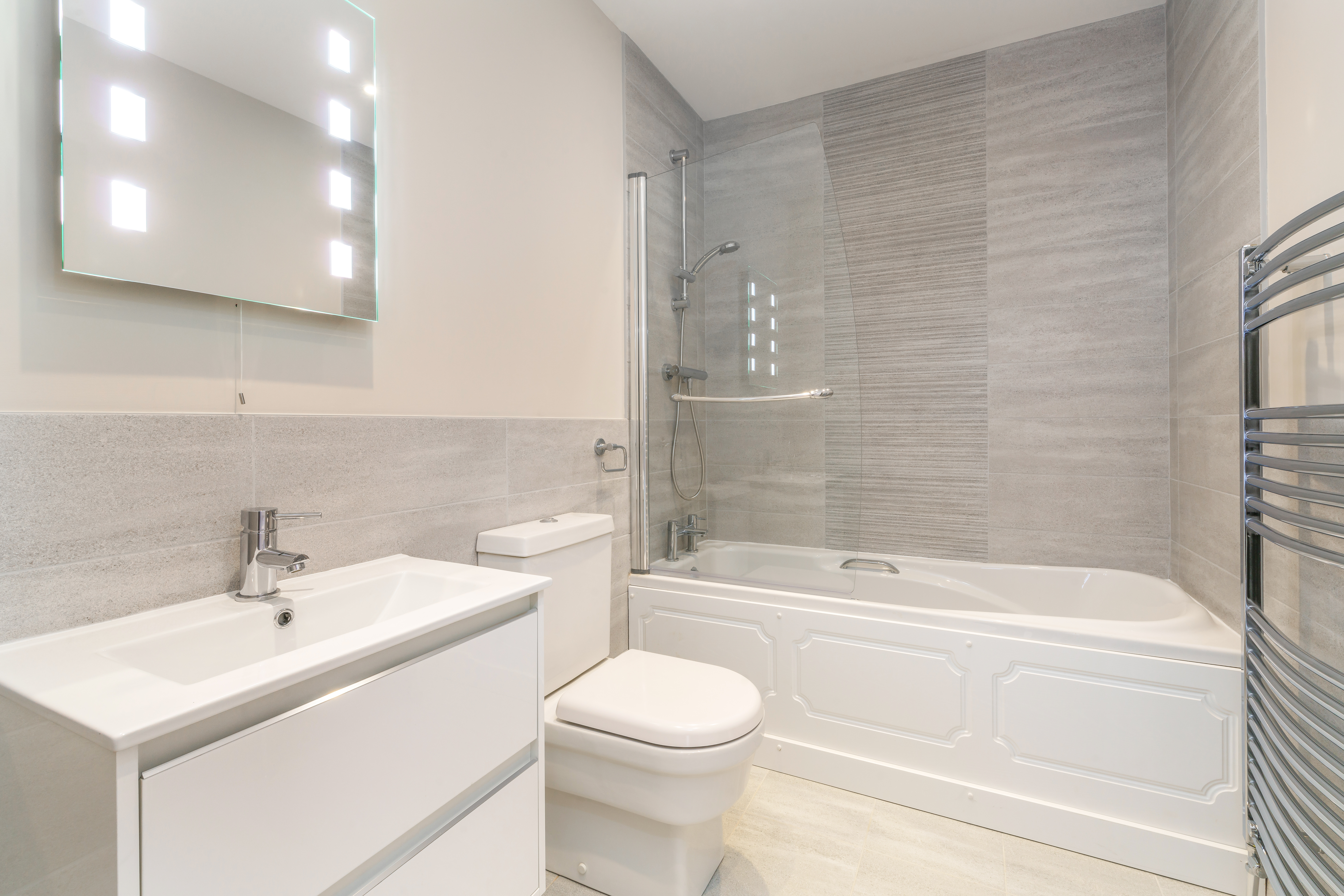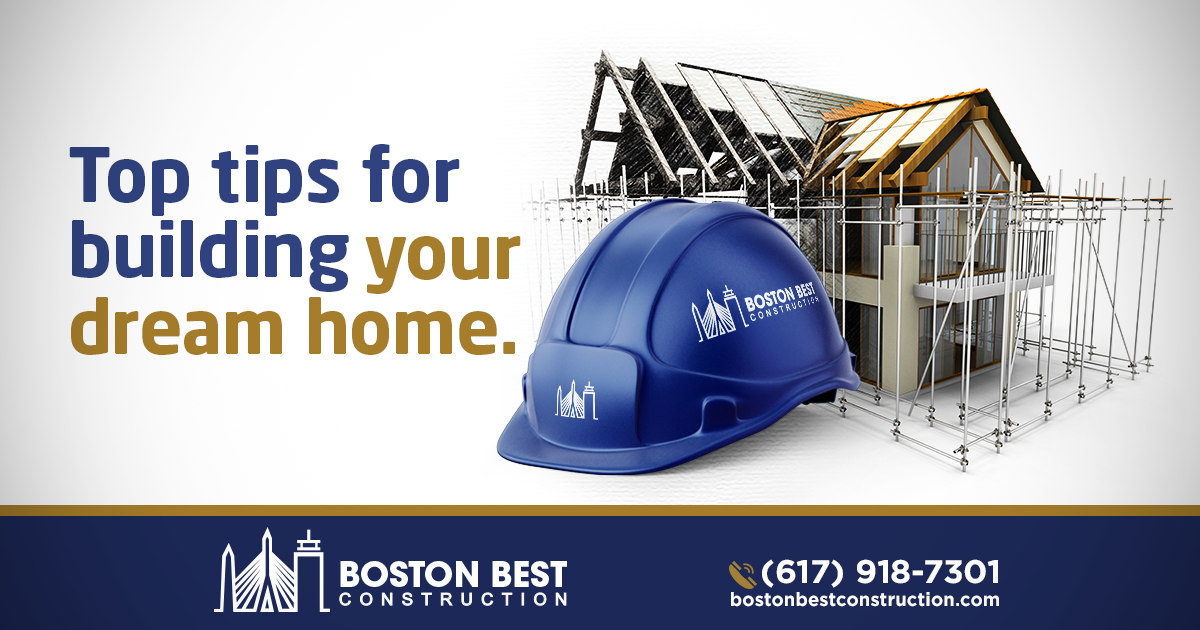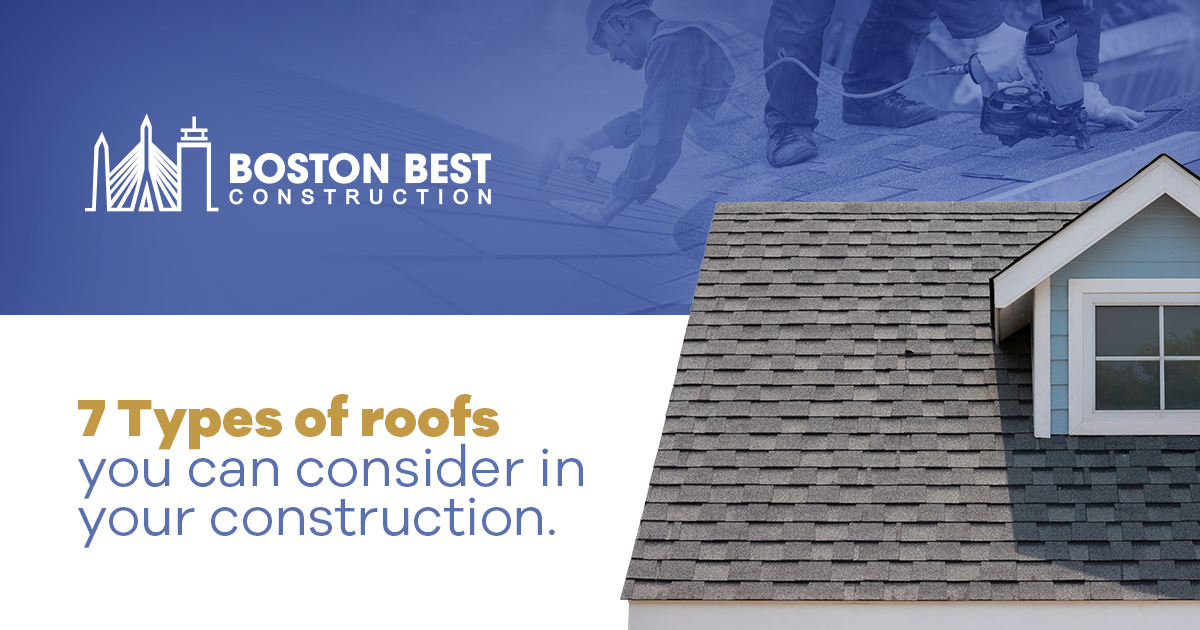Most homeowners in the United States opt for asphalt shingles as their roofing material of choice due to their easy availability, affordability, and versatility. Slate and clay tiles are the most durable options, but they tend to be more expensive than materials like metal or wood. Green roofs and solar shingles, which offer functional alternatives, are among the pricier options.
Investing in a new roof is a wise and profitable decision for homeowners looking to improve their homes. When choosing a new roof, consider factors such as the suitability for your home, climate, and budget. Additionally, it’s crucial to find the right roofing contractor to ensure a proper installation.
1- Shingles (asphalt, fiberglass, composite)

Composite asphalt shingles are widely used in almost 90% of US homes due to their affordability, durability, and easy installation. With a cost ranging from $1.50 to $5.50 per square foot or an estimated $8,000 per roof installation, asphalt shingles are a cost-effective option. They have a lifespan of up to 30 years and can be recycled for pavement use.
These shingles are made by combining fiberglass, asphalt, and mineral composites, resulting in a variety of colors such as gray, brown, red, green, or blue. However, over time, sun exposure may cause the color to fade. The appearance and quality of the shingles may also differ depending on whether you opt for architectural or three-tab shingles.
Advantages:
- Economical
- Requires minimal upkeep
- Widely available
- Suitable for diverse climates
- Available in various colors
- Recyclable
Disadvantages:
- Fades in color with prolonged sun exposure
- 3-tab style vulnerable to wind damage
- Limited lifespan
2- Metal Roofing
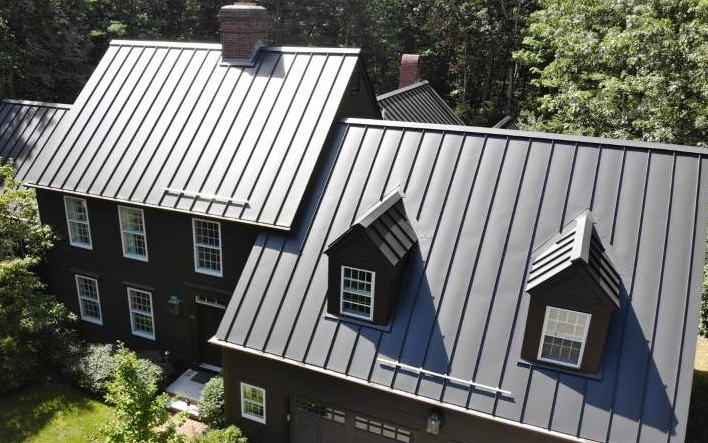
Metal roofing has a rich history dating back to the 1800s, making it a time-tested choice that has stood the test of time. Today, metal sheets and shingles remain a popular option due to their affordability, ease of transport, low-maintenance requirements, and timeless beauty that actually improves with age. With a lifespan of up to 80 years, metal roofs are renowned for their durability. The cost of metal roofing typically ranges from $6 to $14 per square foot, depending on the design and material selected.
There are two main types of metal roofing to consider: shingles and sheets, which are connected with a durable “standing seam” system. Some metal roofing options can also be pre-treated with sealants for enhanced performance. Furthermore, metal roofing comes in a wide array of colors, and certain styles can even be painted to match individual preferences.
Fun fact: The iconic blue-gray rooftops of Paris are adorned with zinc panels that were first installed in the 1830s, exemplifying the enduring history and timeless appeal of metal roofing.
Advantages:
- Low-maintenance
- Durable
- Can mimic the appearance of slate, asphalt, or wood
- Available in a variety of colors
- Lightweight
- Recyclable
Disadvantages:
- May require additional soundproofing measures to reduce noise
- Improper installation may result in warping or ripples
- Installation and repair may require specialized labor
3- Wood Roofing
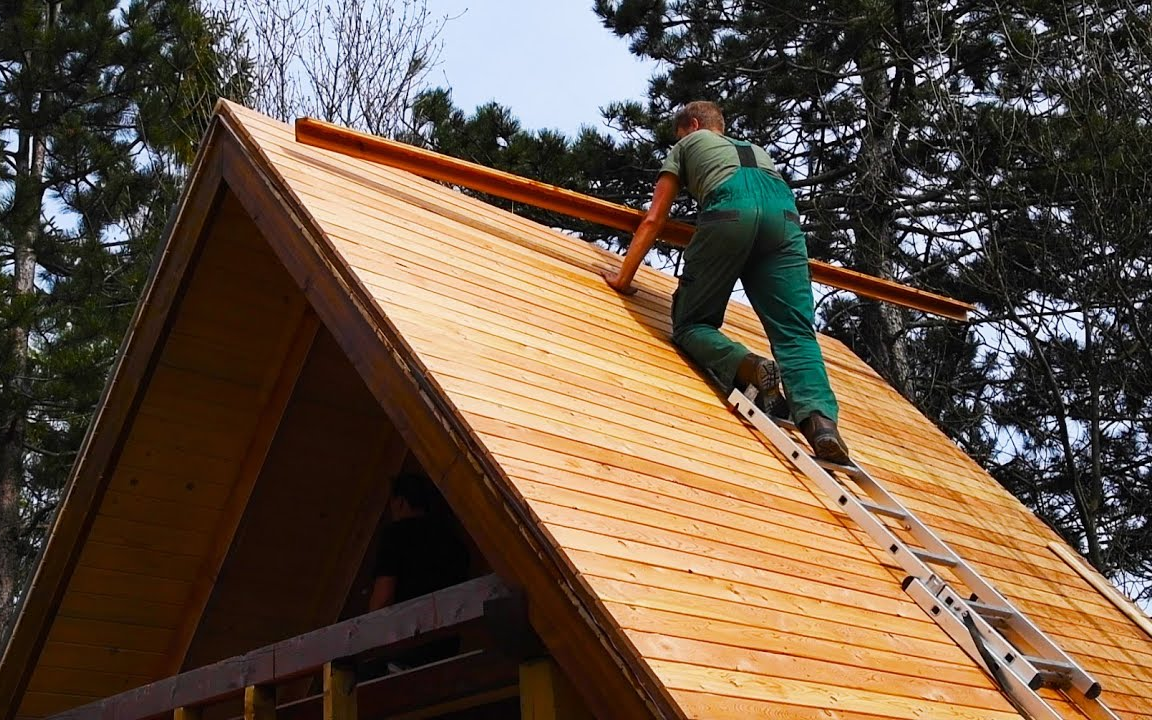
Wood roofing complements the aesthetic of charming Cape Cod cottages, cozy Craftsman and Tudor-style homes. Initially, wood roofs start with a sandy brown color that naturally weathers to a beautiful silver hue with age, adding to their rustic appeal. In dry climates, wood roofs can last up to 50 years, but in fire-prone areas like California, they need to be treated for added protection. In wet climates, such as the East Coast, wood roofs may experience quicker deterioration due to water damage.
Common types of wood used for roofing include cedar, redwood, and pine, all of which naturally repel insects. Cedar shake roofing is the most popular choice among wood roofing options and typically ranges from $5 to $7 per square foot, making it an affordable and attractive option for many homeowners.
Advantages:
- Curb appeal: Wood roofing adds a natural and rustic charm to the appearance of a home, enhancing its curb appeal and overall aesthetic.
- Natural material: Wood roofing is made from renewable and biodegradable materials, making it an environmentally friendly choice for roofing.
Disadvantages:
- Susceptible to water damage, mold, mildew, and rot: Wood roofing is vulnerable to moisture-related issues such as water damage, mold, mildew, and rot, which can result in costly repairs and maintenance.
- May require treatment with fire retardants and chemical preservatives: In fire-prone areas, wood roofing may require treatment with fire retardants and chemical preservatives to reduce the risk of fire damage, adding to the maintenance requirements.
- High-maintenance: Wood roofing requires regular maintenance, including staining, sealing, and cleaning, to keep it in good condition and prolong its lifespan, which can be time-consuming and costly.
4- Clay Tiles
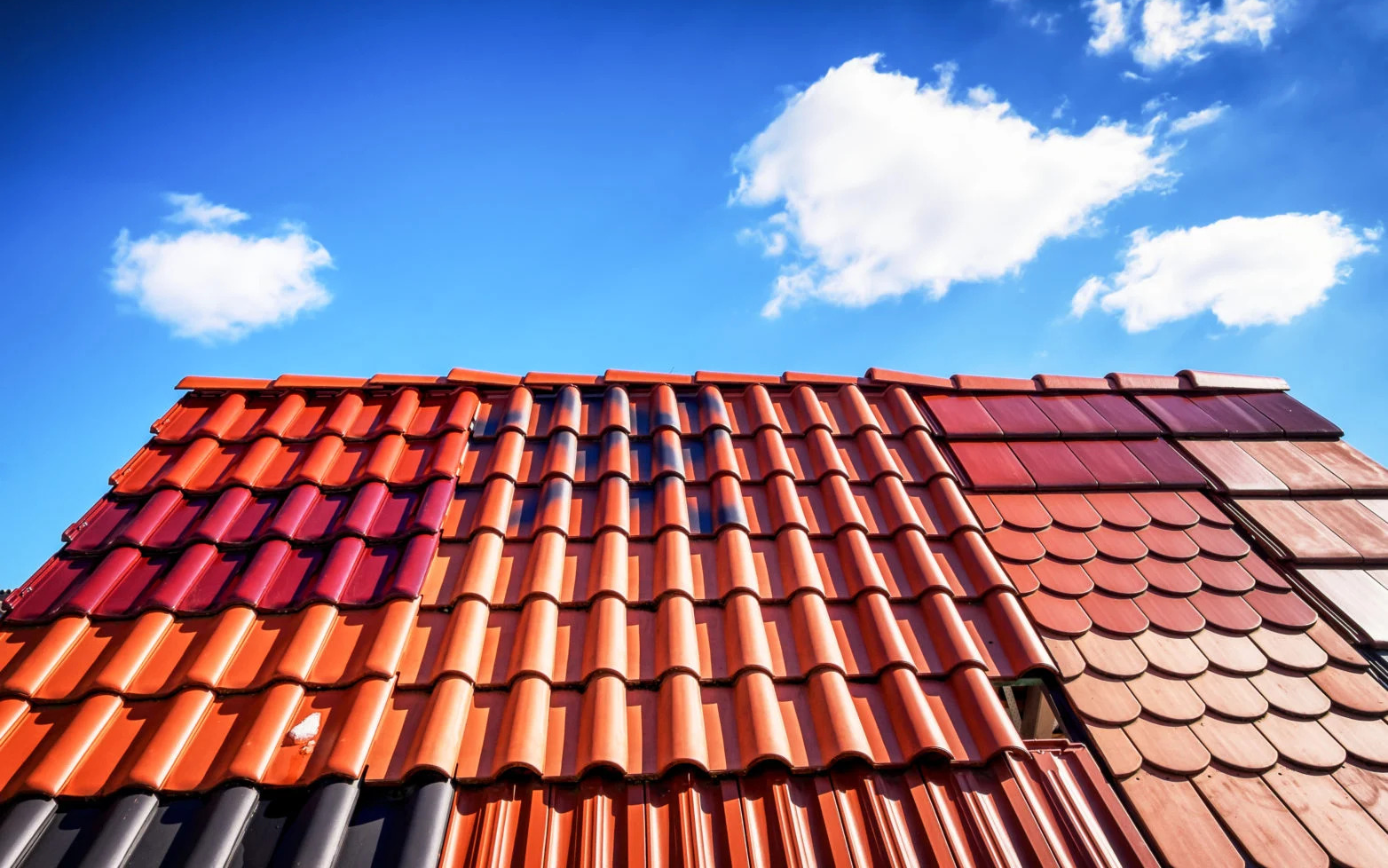
Clay tiles, a popular roofing material worldwide with a history dating back 5,000 years to glazed earthenware rooftops in China, are known for their durability and longevity. With a price range of $10 to $18 per square foot, clay tiles can last 50 to 100 years or more, making them a worthwhile investment. Various styles are available, such as Spanish, French, Scania, and more, allowing for customization.
Clay tiles are particularly suitable for hot climates like Southern California and Florida due to their ability to withstand high temperatures, winds of up to 150 miles per hour, and fire resistance. In addition to their functional benefits, clay tiles also offer low-maintenance requirements, excellent curb appeal, and a wide range of color options including terracotta, red, brown, and gray. Being made from natural materials, clay tiles are also eco-friendly and can help regulate the temperature inside the home, providing insulation.
However, there are some downsides to consider. Clay tiles can be vulnerable to impact and may require extra structural support due to their weight, which can increase installation and repair costs. Additionally, specialized labor may be needed for installation and repair, adding to the overall expense. Despite these considerations, the longevity, low-maintenance, and aesthetic appeal of clay tiles make them a popular choice for many homeowners.
Advantages:
- Low-maintenance
- Enhances curb appeal with various color options like terracotta, red, brown, and gray
- Made from natural materials
- Helps regulate temperature inside the home
Disadvantages:
- Vulnerable to impact damage
- May require additional structural support due to its weight
- Installation and repair may require specialized labor
5- Slate Roofing
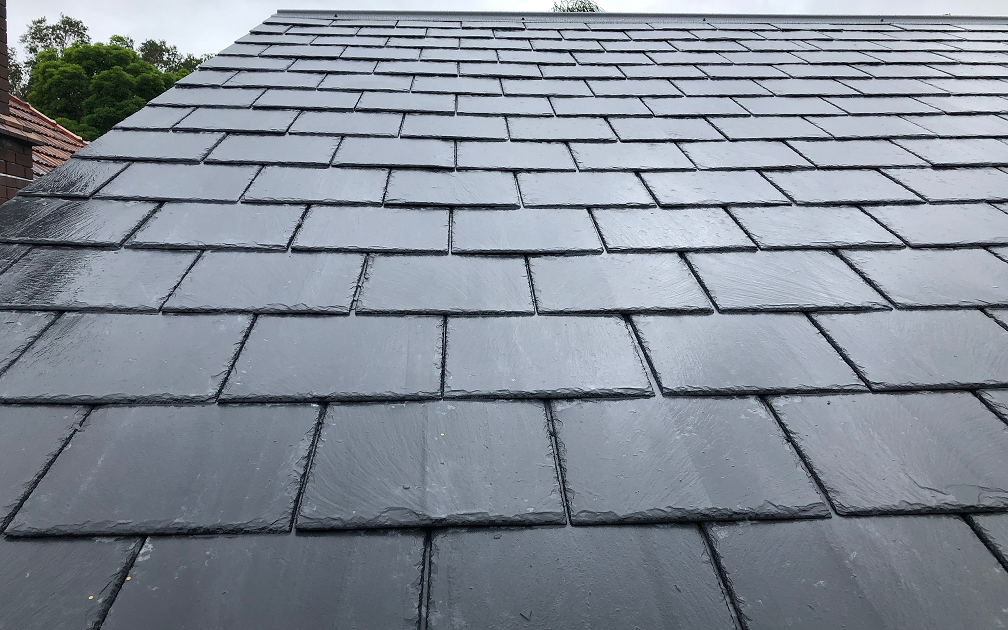
Slate, renowned for its durability, is a premium roofing material that is comparable in cost to clay tiles, with prices ranging from $9 to $20 per square foot. With a lifespan of 50 to 200 years, slate is known for its longevity, making it a wise investment for homeowners. In addition to being fireproof and capable of withstanding high winds and extreme temperatures, slate is also resistant to impact from hail and small branches, making it highly durable.
When it comes to choosing slate, there are two options available: natural, quarried slate or synthetic alternatives like fiber cement slate or bituminous styles. While natural slate is renowned for its authenticity and unique beauty, synthetic slate offers a more affordable option that still possesses many of the same benefits as natural slate. Synthetic slate can be a cost-effective alternative for those who desire the durability and aesthetic appeal of slate but have budget constraints.
Whether you opt for natural or synthetic slate, both options offer exceptional durability and resistance to various environmental elements, making them a popular choice for homeowners who value longevity and performance in their roofing materials.
Advantages:
- Long lifespan
- Low-maintenance
- Durable
- Colors include gray, blue, green, brown and red
Disadvantages:
- Cost
- May need extra structural support for its weight
6- Solar shingles
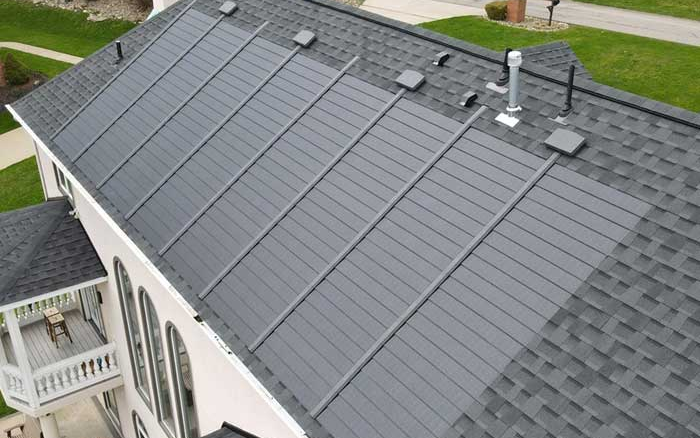
Solar shingles are a cutting-edge roofing material that requires the expertise of a specialized roofer who is knowledgeable in building-integrated photovoltaics (BIPV) for installation.
Although solar shingles can operate effectively for 20 to 30 years, they are a significant investment due to their higher installation costs, ranging from $21 to $25 per square foot. However, they can significantly increase the value of your home by $15,000 or more. As the future of solar power in the United States looks promising, solar shingles are a forward-thinking and environmentally-friendly option for homeowners seeking renewable energy solutions.
Advantages:
- Generates sustainable, renewable energy for your home
- Enhances resale value of your property
Disadvantages:
- Requires specialized expertise for installation and repairs
- Moderate maintenance may be needed
- Additional structural support may be necessary to accommodate the weight and wiring requirements.
7- Rolled Roofing

Rolled roofing is often preferred by homeowners and builders on a budget, as it is typically one of the most affordable types of roofing materials available. Both the installation materials and labor costs are cost-effective, making it an economical choice. Rolled roofing is best suited for roofs with a lower incline, and it can be easily hammered into place. However, caution should be exercised not to hammer it onto flat roofs, as this can result in water leaks.
Advantages:
- Suitable for low-slope roofs
- Does not typically require an underlayment, making installation simpler
Disadvantages:
- Relatively shorter lifespan, typically lasting five to 10 years
- Quality may not be on par with more expensive roofing options
Regardless of which one you think is most suitable for your project, count on us to build the home of your dreams.



